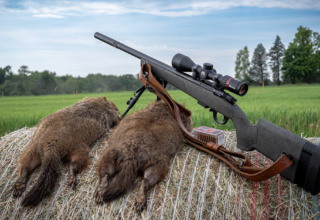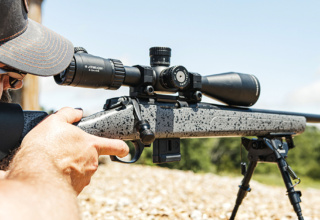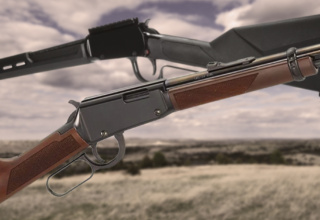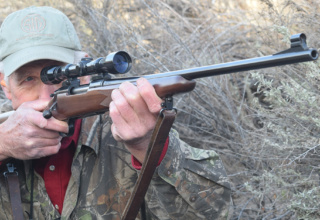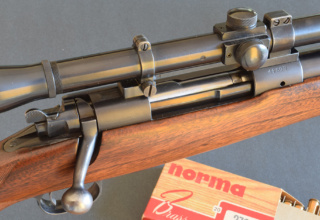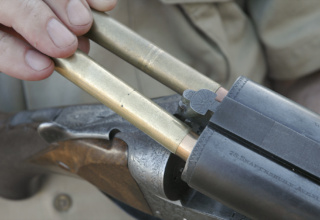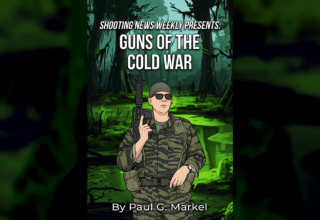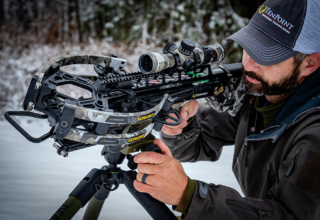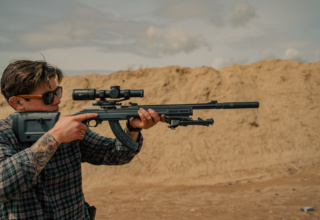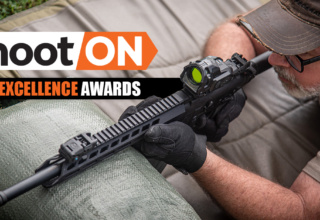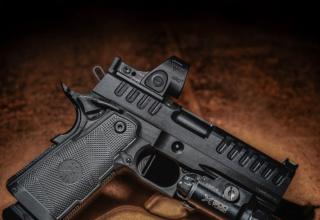Ammo too costly or unavailable? Get off the centerfire habit!
by Wayne van Zwoll
With a glance for rattlesnakes, I snugged my sling and elbowed to a nearby mound, gaining just enough elevation to get the muzzle above prairie grass. The beast had vanished. I waited. After a time, up popped its head, eye-glint bright in the scope. Press gently… Impact crowded the rifle’s snap.
You can upend prairie dogs and ground squirrels farther off with a .223 or a .22-250; but to hone hunting skills and get more shooting for less money, you’ll belly down with a .22 rimfire.
My first love was a farmer’s Remington 121 with a J4 Weaver the diameter of a spark plug. With its thick, fuzzy crosswire quivering wildly against pond-water sight pictures, I posed little threat to local barn rats. But slowly I learned to steady that slide-action against my pulse, control my breathing, and tug softly on the trigger, laying waste in pens and granaries with .22 Shorts. Later, a patient coach and a 40-X Remington from the DCM improved my accuracy. Each Tuesday, I’d shell out 50 cents for a box of ammo in Earl’s basement range. An Anschutz 1413, University team matches, and Olympic tryouts led to open competition and two state prone titles.
“But for big game you’ll need a real rifle.”

Such well-intended advice from hunters seems to me oddly dismissive of the world’s best-selling cartridge. Beyond its own utility, a .22 rimfire can make you deadly with big game rifles, which some hunters fire less often than they change oil in their pickups. You can afford hundreds of shots with a .22 for every box of centerfire loads. And you won’t develop a flinch. Commit an hour per week to that .22, squeeze in a few hunts for prairie dogs, squirrels, or cottontails, and your field shooting will improve! And while a rimfire rifle may not hold magic enough to reverse aging, it can rout the week’s worries, even leave you grinning like a barefoot kid!
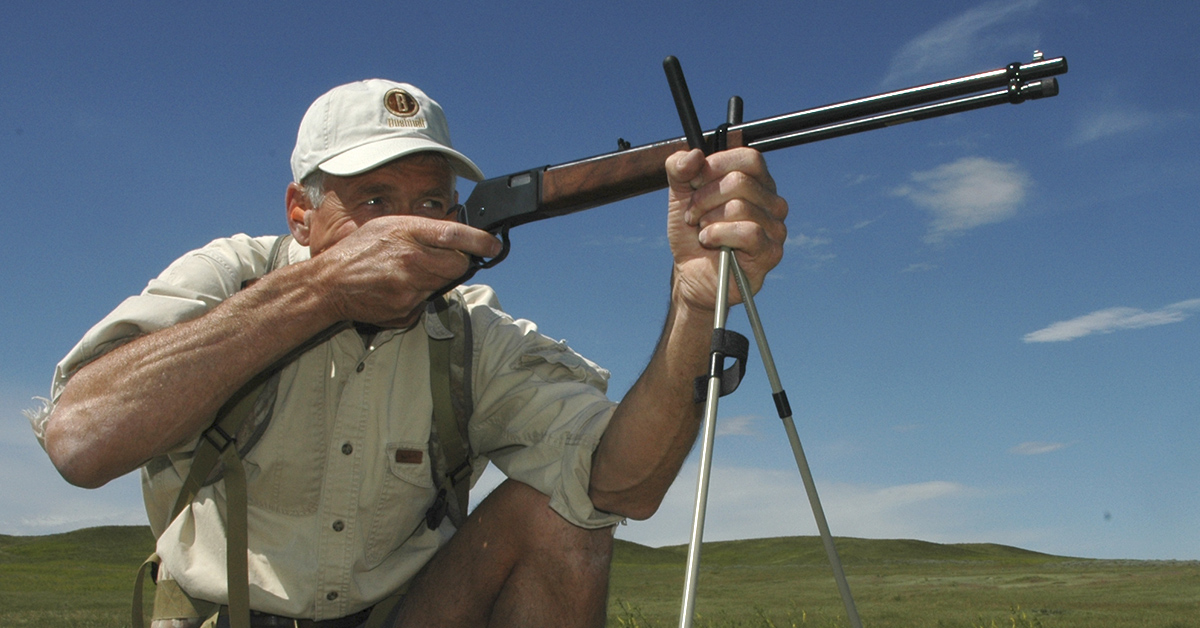
Horace Smith and Daniel Wesson came up with a .22 rimfire round in 1857. Four grains of black powder drove a 29-grain bullet at about 600 fps from the 3-inch barrel of a spur-trigger revolver. In 1871, the case was lengthened .192 inch, the charge hiked by a grain. Dubbed the .22 Long, this round wrung over 1,000 fps from a rifle. In a fit of logic, someone called its parent the .22 Short. The .22 Long Rifle arrived in 1887, courtesy the J. Stevens Arms & Tool Company. Its 5-grain charge sent a heavier 40-grain bullet from the .22 Long’s hull. Semi-smokeless, then smokeless loads followed near century’s close. In 1900, crimped cases secured the heeled, outside-lubricated bullets. In 1930, Remington developed a high-speed LR load that clocked about 1,200 fps from rifles.
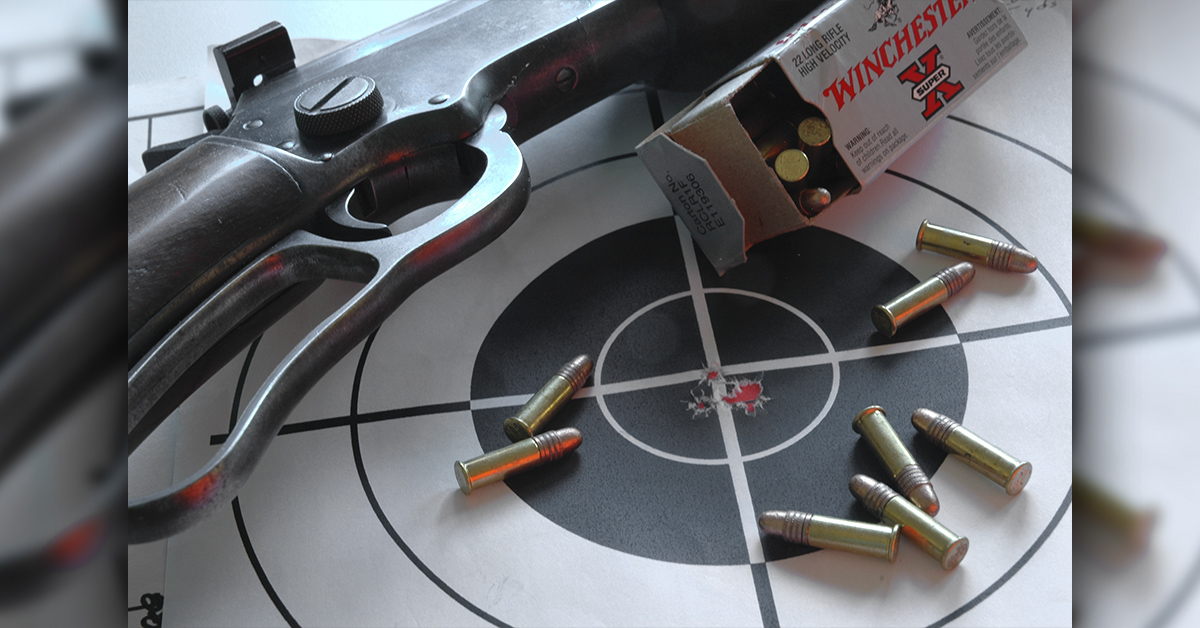
There was, briefly, a .22 Extra Long. It appeared in 1880 with a 3/4-inch case that held 6 grains of black powder. Evidently, it didn’t shoot accurately. But its 40-grain bullet survived to bless the .22 LR.
While a rimfire rifle is the archetypal “beginner’s gun,” .22 cartridges have fueled the careers of gifted exhibition and competitive shooters. The best match loads will shoot into one very small hole at 50 meters, and on a windless day from an accurate barrel, clump bullets inside 1-inch X-rings at 100 yards. The mild report and negligible recoil that pamper small-framed shooters also suit .22s for fast, prolonged shooting in demonstrations.

A girl born in an Ohio cabin in 1860 famously amazed crowds with her .22s. Phoebe Ann Moses grew up using a .22 rifle to help feed her family — even, as the story goes, killing quail on the wing! She handily beat the boys at local matches. When she out-shot visiting marksman Frank Butler, he proposed. They married, and 15-year-old Phoebe joined Butler’s traveling circus as Annie Oakley. Later, Buffalo Bill Cody hired the pair for his Wild West Show. Aiming into a mirror, firing over her shoulder, Annie shattered glass balls Frank tossed in the air. She sent 25 bullets through one hole in a playing card in 25 seconds and nipped cigarettes from the lips of volunteers – including the man who would lead Germany into WW I. Crack shot Johnny Baker tried for 17 years to out-shoot Annie. But, he sighed, “she wouldn’t throw a match. You had to beat her, and she wasn’t beatable.”
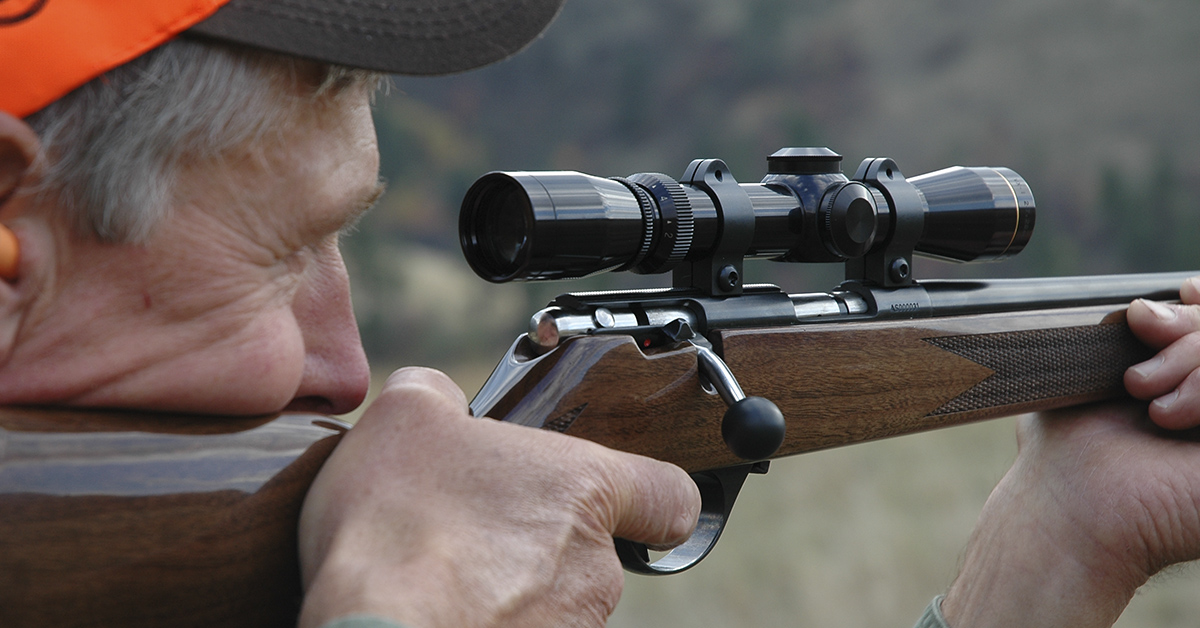
Texan Ad Topperwein came along nine years after Annie. He combined artistic talent with a keen shooting eye to drill “Indian head” profiles into tin at the headlong rate of a shot a second! No hunter, Ad favored aerial targets. In 1894, he broke 955 of 1,000 tossed 2 ¼-inch clay disks. Disappointed, he fired at 2,000 more, busting 1,976. Ad was said to have perforated postage stamps on airborne washers. Shooting for Winchester, he held a Model 63 autoloader ejection port up, fired, then hit with a fast second shot the .22 hull spinning through the air! His most remarkable feat was a 1907 marathon in San Antonio, when he fired for 120 hours at 72,000 tossed 2 ¼-inch wooden blocks — and missed only nine!
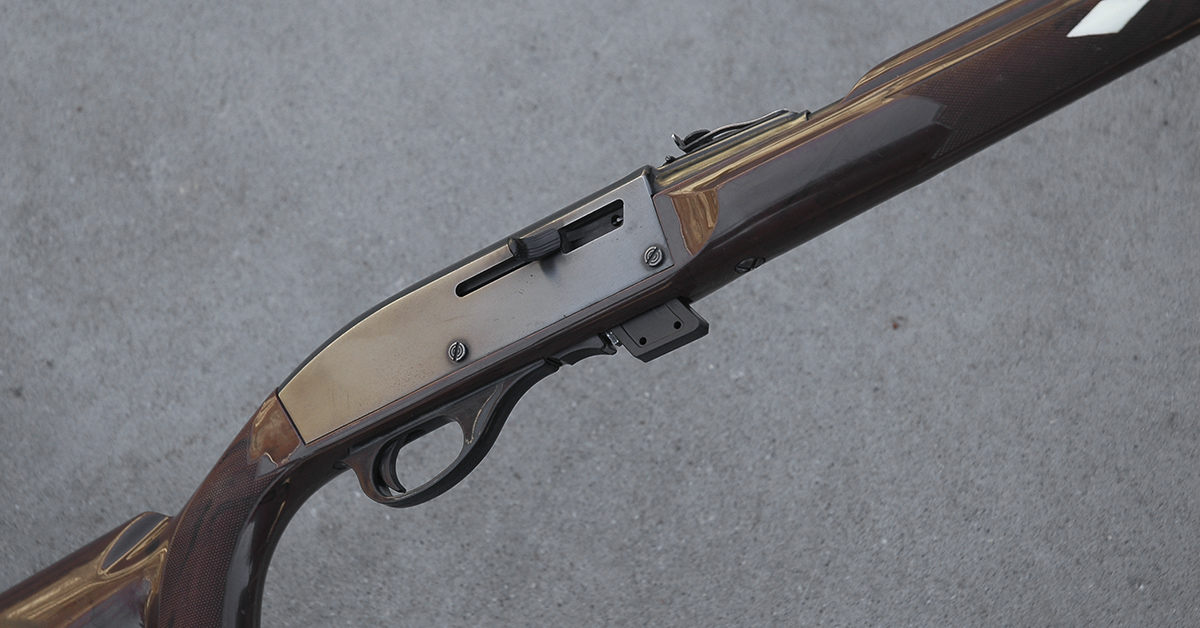
That record, set with Winchester 1903 autoloaders, lasted until 1959, when Remington’s wizard Tom Frye used the company’s new Nylon 66 auto to hit 100,004 of 100,010 hand-tossed blocks.
Other exhibition shooters have leaned on .22s. The late ace shotgunner Tom Knapp once told me he could hit a tossed golf ball as many as three times with .22 bullets, keeping it aloft by shading low!
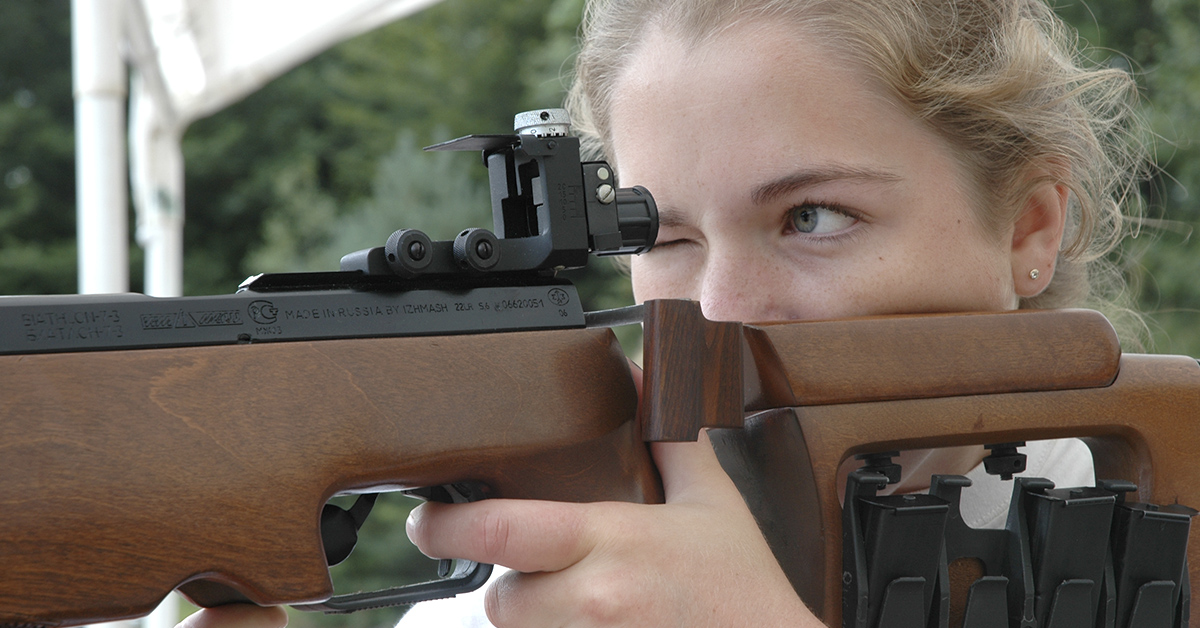
More disciplined shooting, in NRA and Olympic events, shows the accuracy of the best .22 rifles. One of these is Remington’s Model 37 Rangemaster, designed by Crawford Loomis. Kenneth Lowe and A.L. Lowe helped bring it to prototype stage in 1932. The Depression throttled further development, but a few 37s showed up at Camp Perry’s National Matches in 1937. Production began in earnest the next year. This 12-pound .22 had a heavy 28-inch barrel, a beefy stock with front rail, and an adjustable trigger. A five-shot magazine or a single loading block — each of machined steel — fed the dual-extractor bolt. Remington paired its micrometer rear sight with a Redfield globe front. At $69.95, the Rangemaster was a steal; but just 1,788 sold before an improved version appeared in January, 1940. Its new stock had a higher, thicker comb and longer forend. Catalog suffixes indicated sight options (e.g. 37AV for rifles with Wittek Vaver rear sights). WW II interrupted production after 2,032 improved rifles. In total, Remington built 12,198 Model 37s before dropping the rifle in 1954. The 40x would replace it two years later.

I bought an unaltered 37. My friend and fellow competitor Vic Fogle installed a McMillan barrel. For several years, that rifle would keep my prone scores near the top of the board.
But many more .22 rifles go to the squirrel woods than to prone matches. These need not feature air-gauged barrels, adjustable triggers, or micrometer iron sights. While you can still spend enough on a sporting .22 to spark a divorce, some models cost less than fueling a big pickup.
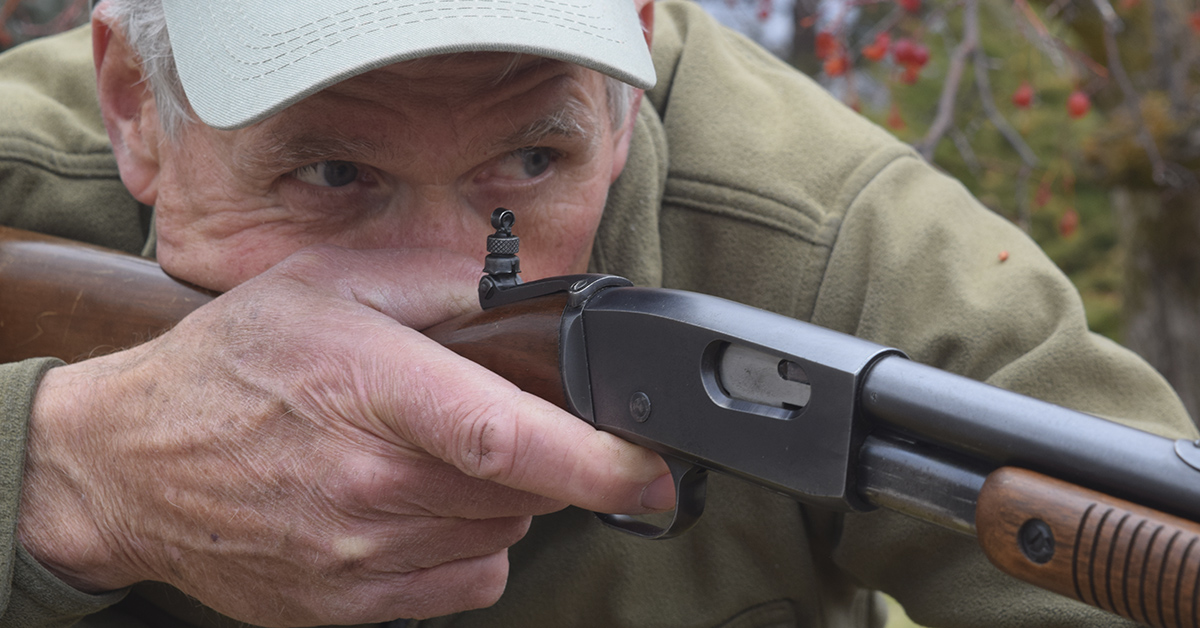
Even as I pestered rats with that borrowed Remington 121, I plotted to own a .22. A new repeater was well beyond my budget; so, I turned my eye to a Winchester 67 single-shot in the glass case under an aging moose head in the local hardware store. This walnut-stocked beauty was my first junior-high crush. Alas, at $16.50, it remained just out of reach as I shoveled snow off Michigan drives to pile up coin…
I’ve owned a small herd of .22 rifles since, but never a 67. That generation of rimfires has passed. After many gun shows, I did find a clean Remington 121 and happily paid three times its original price. Winchester .22s, from the 1890 and later 61 slide-actions to the classy 52 Sporter bolt rifle and the lever-action 9422, are pricey now, if well-tended. Ditto Annie Oakley’s favored 1897 Marlin and its Model 39 progeny. High-quality slide- and lever-action .22s are costly to build. Even entry-level target rifles, like Remington’s 513T and Winchester’s 75, bring hefty sums. Collectors covet them, and few .22 rifles now are designed for competition with iron sights.

But despair not! Worthy .22s include current models and the recently discontinued. One of my favorites is a Remington 504. Another: a Weatherby on an Anschutz action. Both wear compact Leupold scopes. Cooper’s elegant .22 sporters will also hike your pulse. CZ’s series of bolt-actions has become the Model 455. With Eley ammo, mine shoots into a nickel at 75 yards! Browning re-introduced its classy T-bolt straight-pull rifle and has kept its lithe, slick-shucking BL-22 lever-action. The bottom-eject auto that dates to John Browning’s day delights shooters who can use its low sights. Volquartsen’s match-accurate self-loaders have piston-smooth actions, target-quality triggers, and eye-catching laminated stocks.
A fine, time-polished .22 pulls you back to simpler days, when eager lads hurried .22 Shorts into magazines and squinted over iron sights or into milky, penny-diameter glass. The value of such rifles lay in their ability to flip rats in sagging barns, pull squirrels or crows from high limbs, and tumble cottontails zipping through powder snow. Walnuts on fence-posts sifted champion shooters from weekend also-rans.
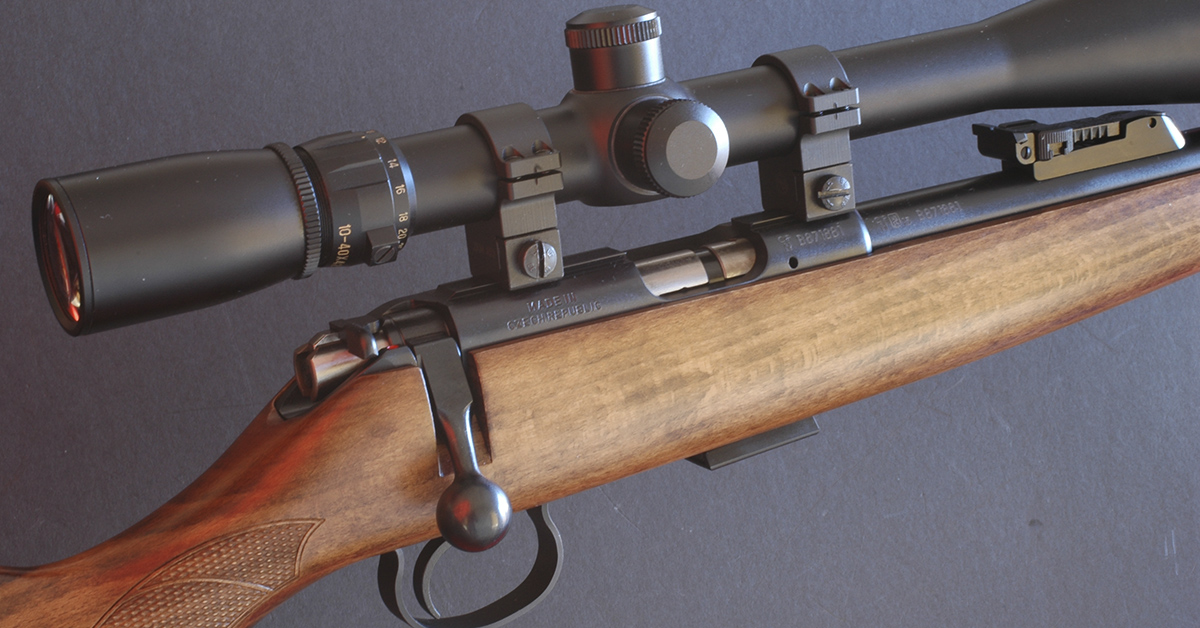
Of the .22 rifles that have followed me home, few remain. I should have kept all of them. Alice cautioned me against selling and trading rimfires. “The Winchester 75 Sporter is mine,” she’d remind me, mindful that I’d given her, then later swapped away, a lovely 52A with a 10x Fecker scope. In her hands, it punched many bullseyes, and mere mention of her name on alfalfa’s hem would send scores of Belding ground squirrels racing for their burrows.
Had Alice controlled the gun rack, I’d still have a cherry Marlin 1897, and the nimble Browning BLR with receiver sight that once toppled a crow at 141 yards. She would have over-ridden my penurious instinct when at a gun show I passed up a Winchester 52 Sporter, custom-stocked by Al Biesen, because the $500 tag seemed steep.
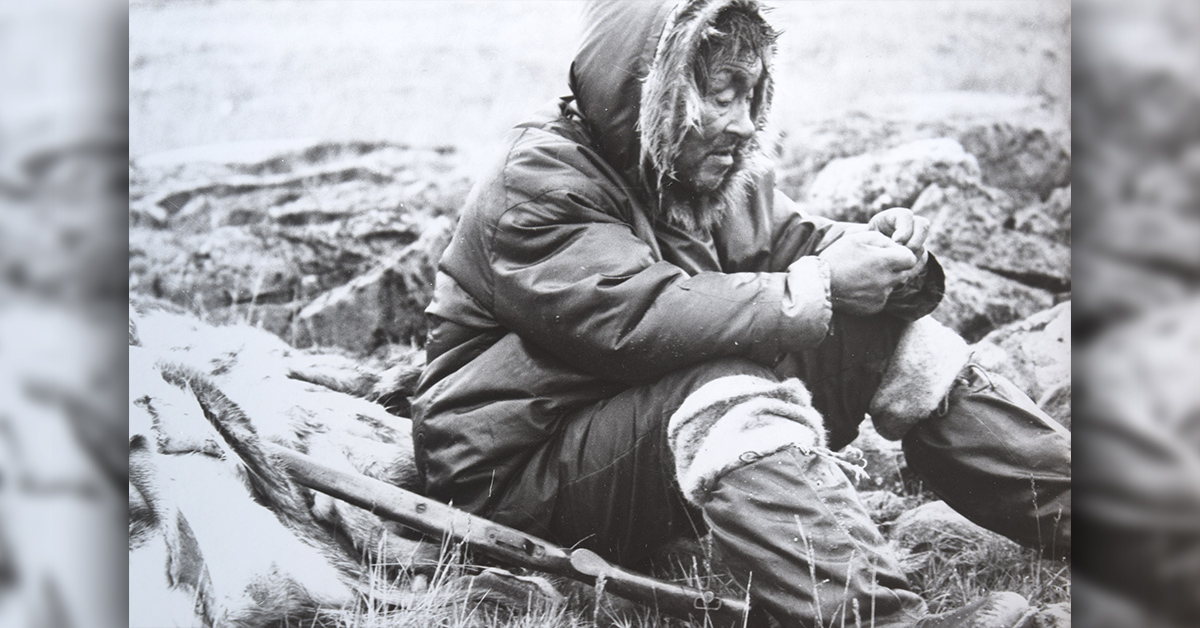
Not that you need a classy or collectible rimfire for hunting. A South African hunter showed me the battered single-shot that had killed his first kudu. In the Arctic, an aging Inuit shuffled into camp with six caribou hides twine-tied to his back and a .22 that appeared to have been reeled in through salt water over a lava bed. Both these rifles had crude open sights
So did the single-shot Cooey Ace 1 Bella Twin carried along an oil exploration cut-line south of Alberta’s Slave Lake on May 10, 1953. The 63-year-old Cree and partner Dave Auger were hunting small game. But the grizzly they saw approaching was not small. Quickly, they hid in a fringe of brush. The bear kept coming, and eventually got so close, Bella decided shooting it with her .22 carried less risk than not firing. She knew her little bullet would have to reach the brain, A veteran trapper, she’d skinned hundreds of animals; she knew where to aim. From the side, at about 30 feet, she pulled the trigger.
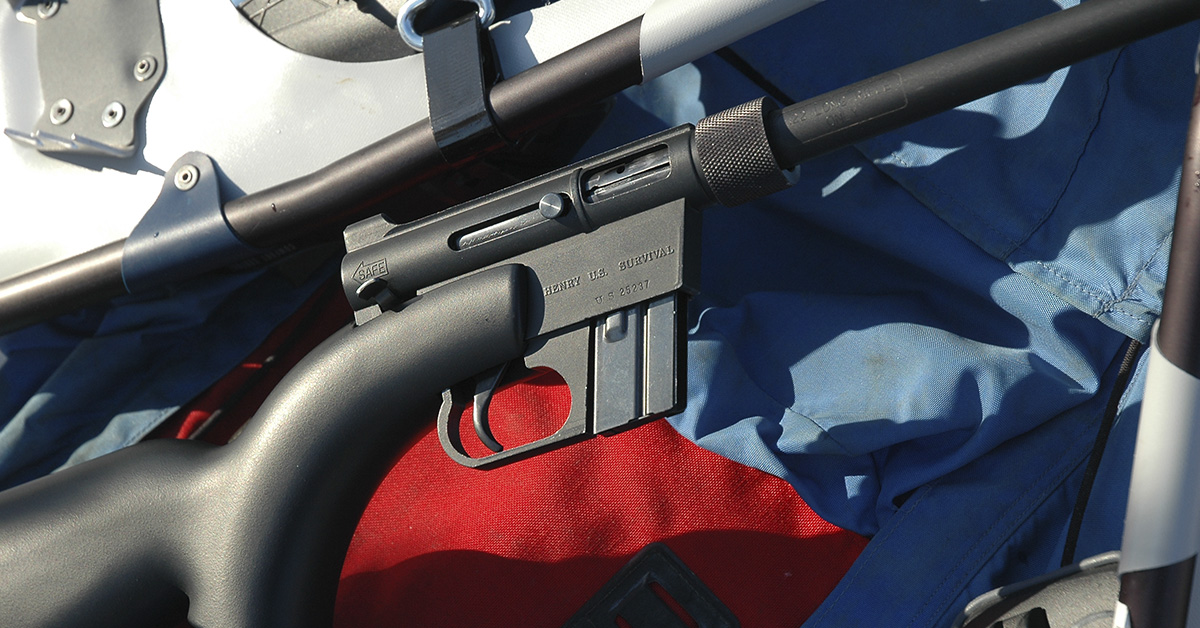
At the rifle’s snap, the bear collapsed. Bella reloaded and shot into its head again. And again. And again, and again. The bullets entered just forward of the ear, punching a tight cluster of holes in the skull and scrambling the brain.
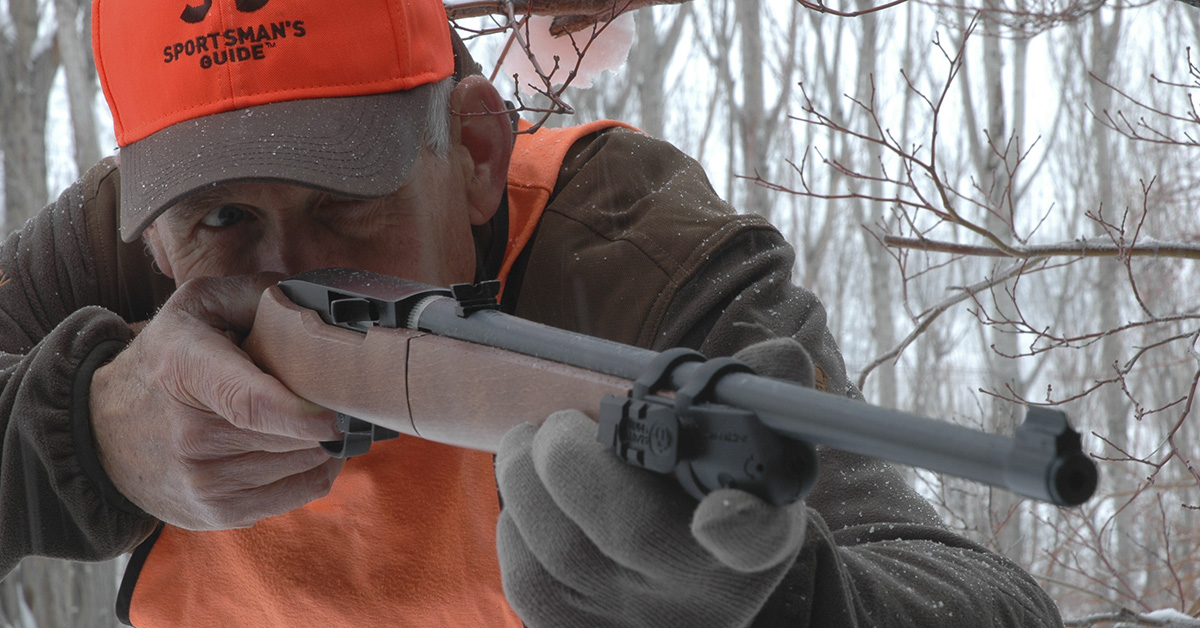
The grizzly that fell to Bella Twin’s .22 wasn’t just big; after scoring, the Boone & Crockett Club declared it the new world’s record! Bella evidently sold the skull and hide of her bear. The rifle wound up in a museum, in much the same condition it was when Bella drew a bead on the grizzly. Hockey tape had replaced the missing forend screw. Corrosion had eaten away at the barrel and receiver. The stock had no remaining finish; a chunk of wood was missing; a crack had been repaired with a wood screw.
The Cooey Ace 1 was produced only briefly, from 1929 to 1934. I can’t recall it taking another grizzly. On the other hand, I’ll not be so foolish as to bet against a .22!
The Ammunition Headache
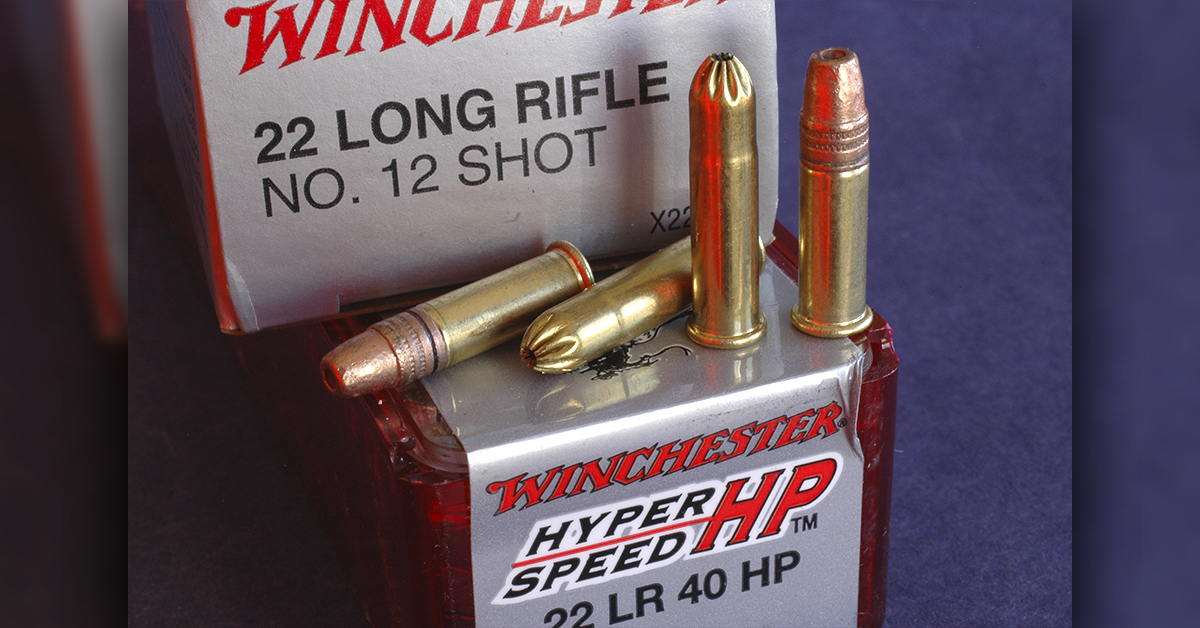
The current .22 ammo shortage — a demand problem due largely to hoarding — has doubled, even tripled the price of cartridges. Take heart! U.S. factories load more than 2 billion .22 rounds annually, and shelf supply will surely increase. Production leans heavily to .22 Long Rifle, superior to the .22 Long and .22 Short for almost all uses. With bullets of 30 to 60 grains and a #12 shot load, the LR comes in myriad forms for hunting, plinking, and competition.

Hunting loads hit almost as hard at 100 yards as the Long at the muzzle! And even small-game loads can be one-hole accurate. Recently, my CZ 455, shooting Eley’s 40-grain subsonic hollowpoint loads (1,085 fps), chewed a five-shot 50-yard group that mic’d .35!


